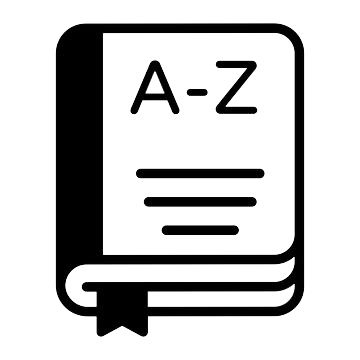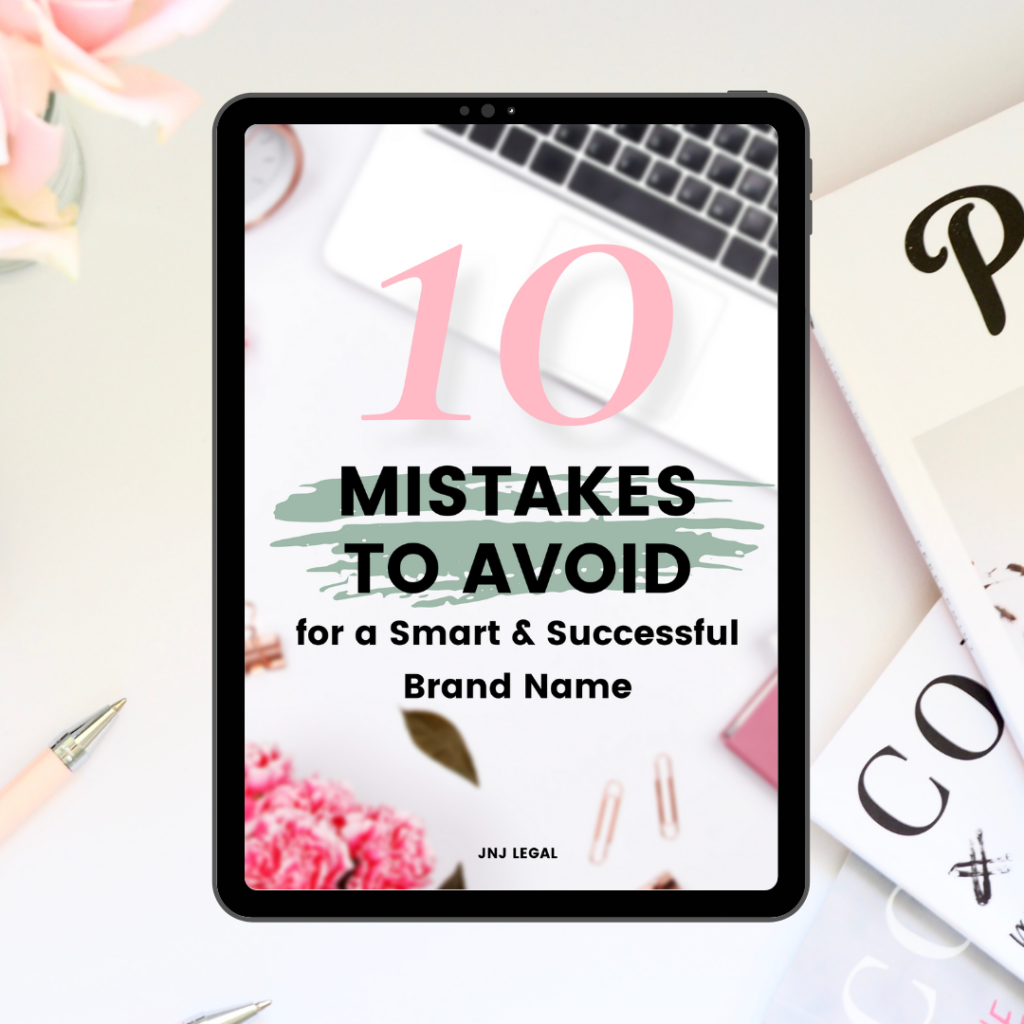
I like to say that, “America runs on contracts”! A little spoof of Dunkin’s popular slogan lol…
But it’s true. Contracts are an essential part of every business transaction! That’s why it’s so crucial to draft a contract that accurately reflects the intentions of the parties involved and accounts for every possible problem we can think of. And as you can imagine, doing so is no easy feat!
Contract drafting is a complex process that requires careful attention to detail and legal knowledge. Even minor errors or omissions in a contract can have serious consequences, including disputes, litigation, and financial loss for a client.
So in today’s blog post, we will discuss 7 most common and costly mistakes to avoid when drafting a contract.
7 Common Costly Mistakes to Avoid
Mistake #1: Failing to Define the Parties and the Purpose of the Contract

One of the most fundamental aspects of a contract is to identify the parties involved AND the purpose of the agreement. Without a clear definition of who the parties are and what the contract is intended to achieve, the contract is likely to be unenforceable.
My first step whenever I sit down to draft a contract is to fact-check and research the parties. It is essential that I clearly identify the parties, including their legal names, addresses, and current contact information, to avoid any confusion or ambiguity.
And to ensure proper due diligence, you should not only identify the parties, but also check whether each business is in active compliance/status with their state.
If a company fails to renew their entity’s registration status for a certain period of time, many states will administratively dissolve the company! This would mean that you’re essentially entering into an agreement with a company that no longer exists. This mistake could have been easily avoided with a bit of research on the state-appropriate company registry or even with a request for compliance documents to the other party!
My next step after party identification is to draft the purpose of the contract. In the preamble of each contract, the purpose should be clearly defined, including the goods or services being exchanged, the timeline for performance, and any other relevant terms. This information should be provided in clear and concise language to ensure that all parties understand their obligations and expectations at the onset.
Mistake #2: Failing to Define Key Terms and Concepts
Another common mistake in contract drafting is failing to define key terms and concepts used in the agreement. This mistake can lead to misunderstandings and costly disputes later down the road.
Key terms may vary depending on the type of contract, but I often tend to include definitions for IP terms, such as, “Intellectual Property Rights”, “Trademarks”, “Trade Secrets”, as well as, general terms, like “specifications”, “goods,” and “payment”. These terms should be defined in clear and precise language, leaving no room for interpretation. Of course, with something as important as your trademark, for example, you want to have that clearly defined and protected in writing.
These terms or concepts should be defined early in your contract, preferably the first section after your preamble, to ensure that all parties have a clear understanding of their meaning.
Failure to define key terms can result in confusion and disagreements that could have been avoided by providing clear definitions at the onset.

Mistake #3: Failing to Include Appropriate Warranties and Representations
Warranties and representations are critical components of many contracts, particularly those involving the sale of goods or services.
These provisions set out the expectations and promises made by the parties regarding the quality, performance, or other attributes of the goods or services being exchanged.
It is essential to include appropriate warranties and representations in the contract, including any express or implied warranties required by law. Failure to do so could leave one or both parties vulnerable to legal action in the event of a dispute.
For example, if you are working with a graphic designer to design your logo, you would want to have a warranties and representations clause, stating that the work they’ve provided you is (1) solely original, not belonging to anyone else, (2) not to be repurposed for anyone else, and (3) a possible “indemnification” for any third party infringement suits that may arise from this work. This would be the case if the graphic designer has provided you with a logo that infringes on another user’s trademark rights. Should the infringed party seek monetary relief, the graphic designer is accepting fault and would be on the hook, not you.
Mistake #4: Failing to Consider Governing Law and Jurisdiction
This mistake is relatively straight forward, but surprisingly, commonly missed in contracts.
Contracts are subject to specific laws and regulations depending on the jurisdiction in which they are signed. Failing to properly consider the governing law and jurisdiction could result in a contract being unenforceable or subject to legal challenges. The applicable law and jurisdiction should be clearly stated within the agreement.
Many parties prefer for the governing law and jurisdiction to be the state in which they reside or operate their business. This ensures that should a dispute arise, they won’t have to spend additional money on travel expenses to appear in court. However, whether that state is truly the most advantageous for their business dealing depends on the state law itself. An attorney can help you decide the appropriate jurisdiction and setting for any potential disputes.
[tqb_quiz id=’32672′]
Mistake #5: Failing to Address Termination and Renewal

Good contracts should include clear and concise provisions outlining the conditions under which the agreement may be terminated and the process for renewing the contract if both parties wish to continue working together.
Typically, termination clauses consider factors like “inability to pay”, “impossibility of performance”, “mistake, fraud or misrepresentation”, “breach of contract”, and “end date/date of completion”. However, depending on the type of contract and business strategy, this section of the contract may vary drastically in language!
For this reason, we always ask our clients to discuss the frustrations and issues they are currently facing in business before we begin drafting any contract. Hearing their concerns allows us to to draft a contract that takes into account and/or prohibits some of the bad actions and problems our clients are hoping to avoid. Their concerns are then expressly prohibited in a termination and renewal clause alongside some tough consequences for the signing party.
For example, if your company is hiring an employee, you may want to list specific misconduct or violations that can lead to termination of an employee, like lateness, unsatisfactory performance, sick leave, etc.
If you’re hiring an Influencer or Ambassador, this section may explicitly define examples of misconduct and behavior that can potentially harm the company’s image/reputation should the influencer engage in them, as well as, place restrictions on the ambassador’s future business deals. Disney would not want Halle Bailey (the “Little Mermaid”) or any of their child actors to start an “Only Fans” or post explicitly sexual photos. Louis Vuitton wouldn’t want their ambassadors to wear Gucci in photos or media campaigns for a set period of time.
Or if you’re collaborating with another company, maybe the termination clause focuses on end date/date of completion because you only plan to authorize use of your Intellectual Property for one specific collaboration. Or maybe your deal is not defined by one collaboration, but instead a license to use your IP for a limited period of time.
Thus, a clear and concise termination and renewal clause will ensure that all parties understand their obligations and the consequences of failing to comply with the terms of the agreement. Failing to address both could leave one or both parties vulnerable to unexpected changes in the agreement and/or potential financial loss.
Mistake #6: Failing to Address Dispute Resolution

Although we hate for this to happen, realistically, disputes are common in business transactions. So, failure to address dispute resolution in the contract is not only a big mistake, but can lead to costly legal battles.
Though the strategy of resoltuion may vary, your contract should include provisions that clearly outline the process for resolving disputes, including timelines, selection of a mediator or arbitrator if preferred, governing law and choice of venue for litigation, and any other relevant details to aid in the resolution of a conflict.
Mistake #7: Failing to Consider Future, Changes, and Amendments
The last contract drafting mistake and probably the most costly is a failure to consider the future.
Building upon Mistake #6, contracts should be drafted with the future in mind. And this is a skill that licensed attorneys have been drilled and trained to recognize and apply.
When drafting a contract, attorneys are constantly going through “What if…” scenarios in our minds and drafting language that will solve an issue that hasn’t even happened. A licensed attorney is essentially a trained overthinker. We prepare for the worst case scenario.
So, failing to consider potential issues, changes or amendments to the agreement could leave one or both parties vulnerable to unexpected changes in the relationship or financial loss.
It is important to predict problems that haven’t occurred, as well as, include provisions for amending the contract in the future, including the process for making changes, the parties authorized to make changes, and any other relevant details or worst case scenarios. This will ensure that the agreement remains relevant and enforceable over time.

Conclusion
In conclusion, contract drafting is a complex process that requires careful attention to detail and legal knowledge. By avoiding these common mistakes, businesses can reduce their legal risks and maintain positive business relationships with their partners and clients. And failing to avoid these common mistakes could have serious consequences, including disputes, litigation, and financial loss.
Moreover, unlike the contracts you may find online, working with an attorney will ensure that your contracts are accurate, enforceable, and above all, actually protective of your interests. It’s always better to have a contract suited to your specific needs and painpoints rather than a standard/generic template that can’t speak to the actual intention of the parties, fails to include industry-specific terms, leaves no representations, fails to consider governing law, termination, dispute resolution, and the future.
Don’t overlook the importance of properly attorney-drafted contracts for your business success. Take the necessary steps to protect your interests and business deals! It can make a big difference in the long-term success of your business.
Let’s talk contract drafting or have us review that outdated contract. Book your legal solution today!















